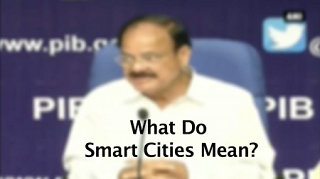From 2GreenEnergy Intern Fabio Porcu: Smart Sensors for Smarter Cities

A sensor converts various physical parameters to electronic signals, which can be interpreted directly by humans, or, more commonly, can be fed into electronic systems, where it is compared with the data collected from other sensors. This has enabled the evolution from manual reading of meter to automatic reading of data.
Here are a few ways in which smart meters can improve a city dwellers’ style of life:
Water Distribution System
A typical water distribution system consists of:
- a water collecting point, such as a river or lake,
- storage facilities, such as reservoirs, and
- a distribution network, typically consisting of pipes (placed either above or underground and underwater) connecting water collecting points, storage facilities, to the customers’ premises.
By its nature, this distribution system is non-intelligent and thus is not good at detecting waste of water, for example, in underground pipelines. By using smart sensors to monitoring the water distribution, it is possible to identify the waste in real time; fast detection means less waste of water.
To enable this process, sensors are deployed around the pipeline for continuous monitoring. Typically, four parameters are used to indicate faults in pipelines: vibration, pressure, sound (made by the liquid as it leaks) and water flow. By monitoring these parameters, a leakage can be successfully detected.
Essentially the same method is used in the gas distribution system.
Monitoring Bridges and Seismic Activity
All public infrastructure needs regular checks to assess its condition. These elements of infrastructure are usually monitored by personnel through scheduled visits, but a visual inspection often can leave small anomalies undetected.
There are a variety of parameters which characterize a structure’s state. The most common parameters for monitoring of structures are listed as:
- chemical (pH, oxidation, and corrosion),
- mechanical (strain, stress and deformation) and
- physical (temperature and humidity).
A variety of sensors capable of measuring these parameters can be deployed in large numbers across a structure for accurate monitoring, but these can create significantly higher costs.
Smart sensors can be also used to detect anomalies in the ground; this can be very useful for the earlier detection of earthquakes or landslides, and allows a better management of emergency situations.
Environmental Monitoring
With smart sensors it is possible to control environmental conditions in such a way as to ensure the quality of life. It is possible to detect environmental anomalies by checking the quality of air and water, and other parameters such as humidity, temperature and ambient carbon dioxide levels, as well as toxic gases and pollution. The reduction of carbon emissions is one of the goals of smart cities and to collect data about it is very important.
Intelligent Transportation Systems
In big cities the number of car is generally increasing, and smart sensors can be a boon in improving the traffic situation, for example, with improved timing of traffic lights. These usually have fixed switch interval times (i.e., from red to green and to yellow), which are not adjustable to traffic conditions. By monitoring the traffic flow it is possible to adjust the timing in such a way to decrease congestion. Traffic congestion has a significant impact on fuel consumption and carbon emissions.
Many different uses of smart sensors have been analyzed in this paper but the most important is in energy distribution. Smart sensors allow the possibility to create a smart grid that will be the future of our cities. This topic needs more space and a more detailed analysis, for this reason this topic will have a discussion in a special paper next time.
